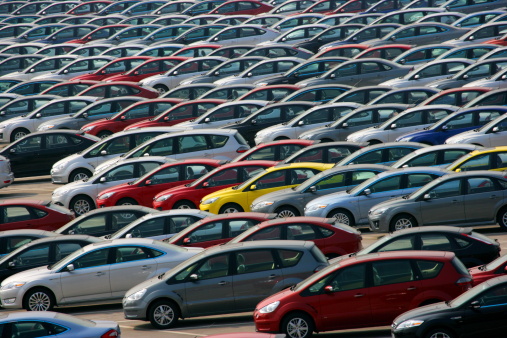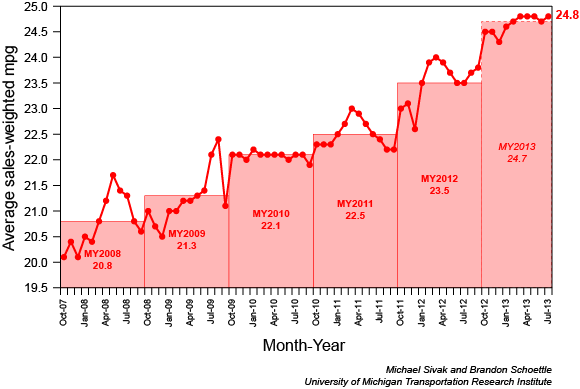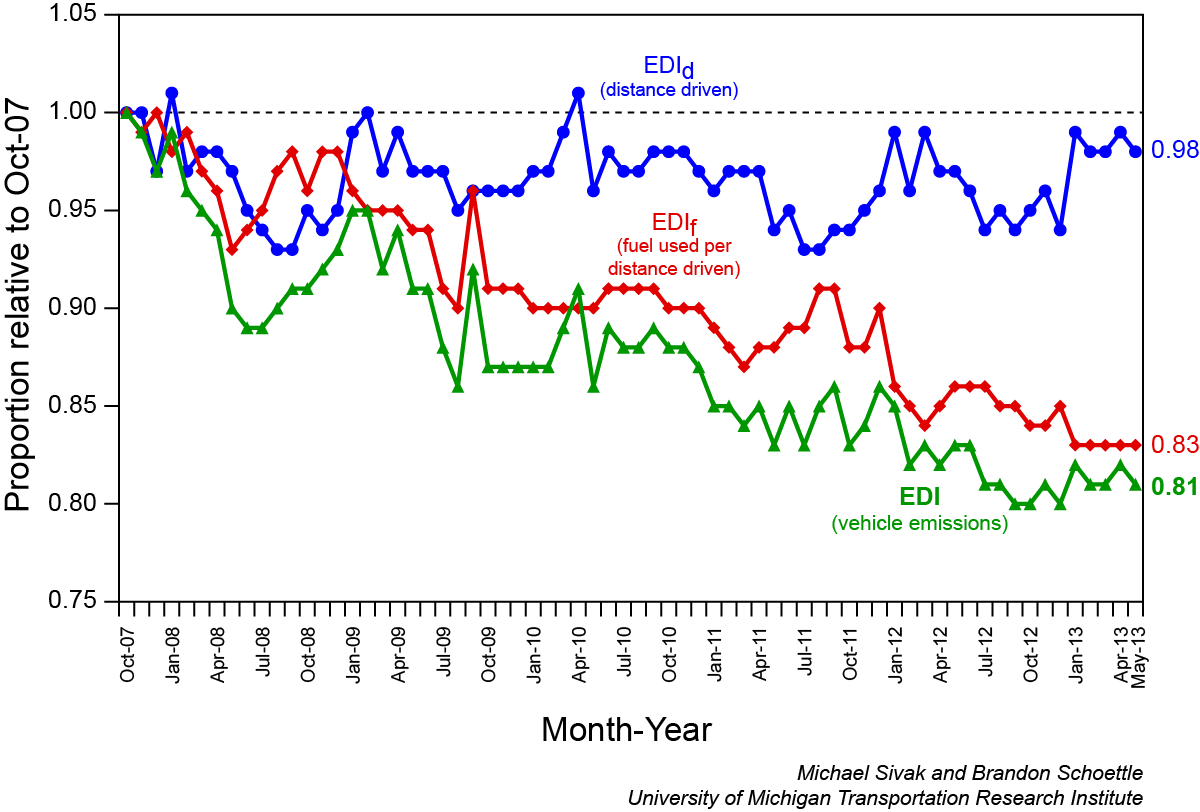Cars and Drivers
Fuel Economy of July New Car Sales Ties Record High
Published:
Last Updated:


The data is based on the window-sticker mpg ratings published by the U.S. Environmental Protection Agency for the various models sold. The Michigan study does not report sales by brand or model, but by combining manufacturers’ sales reports and EPA fuel economy data, we can get an idea of how important fuel economy is to new car buyers and to manufacturers. We have excluded all-electric and plug-in hybrids.
Ford Motor Co.’s (NYSE: F) most fuel-efficient vehicles are the Fusion and the C-MAX hybrids, with combined fuel economy ratings of 47 mpg. Ford sold about 22,200 of the two cars in July and more than 60,000 of its best-selling F-150 series pickups. The highest fuel economy rating for the various F-150 models is 19 mpg. In 2007, the F-150 got 17 mpg and the Fusion got 26.
General Motors Co.’s (NYSE: GM) most fuel-efficient car is the Chevrolet Spark, with a fuel-economy rating of 34 mpg. GM only sold 3,800 Sparks in July, compared with sales of more than 42,000 for its Silverado pickups. The best mileage for any Silverado is 21 mpg. In 2007, GM did not make a Spark, the Silverado got 19 mpg and the best fuel economy rating for a GM car went to the Chevy Aveo with 30 mpg.
Toyota Motor Corp.’s (NYSE: TM) most fuel-efficient cars are the Prius and Prius c models, with combined fuel efficiency ratings of 50 mpg. Toyota sold more than 23,000 Prius models in July, third in company sales behind the ever-popular Camry and Corolla models, which sold nearly 35,000 units and 24,000 units, respectively. A Camry hybrid gets 41 mpg and a non-hybrid gets 28 mpg. The most fuel-efficient Corolla Matrix also gets 30 mpg. In 2007, a Prius got an EPA rating of 55 mpg and a Camry Solara posted a rating of 28.
Honda Motor Co. Ltd.’s (NYSE: HMC) most fuel efficient vehicle is the Civic hybrid, with a combined EPA economy rating of 44 mpg. All models of the Civic are also Honda’s best-selling cars in the United States. In 2007, a Honda Civic hybrid’s EPA combined mileage rating was 50 mpg.
For Ford and GM, increasing the fuel-economy ratings on their light trucks — which are the companies’ best sellers — probably made a bigger difference to their fleet economy ratings than anything else they could have done.
At Toyota and Honda, increasing the fuel-economy ratings on their already-efficient models appears to have been the focus.
U.S. drivers are driving fewer miles, using less fuel and emitting 19% less pollutants than in 2007, as the following chart from the University of Michigan illustrates. Perhaps old dogs can learn new tricks.

Start by taking a quick retirement quiz from SmartAsset that will match you with up to 3 financial advisors that serve your area and beyond in 5 minutes, or less.
Each advisor has been vetted by SmartAsset and is held to a fiduciary standard to act in your best interests.
Here’s how it works:
1. Answer SmartAsset advisor match quiz
2. Review your pre-screened matches at your leisure. Check out the advisors’ profiles.
3. Speak with advisors at no cost to you. Have an introductory call on the phone or introduction in person and choose whom to work with in the future
Thank you for reading! Have some feedback for us?
Contact the 24/7 Wall St. editorial team.